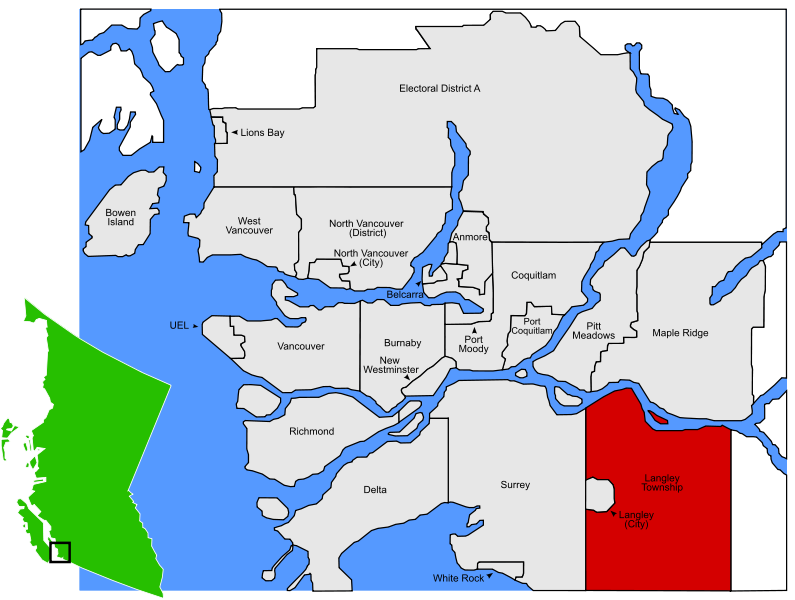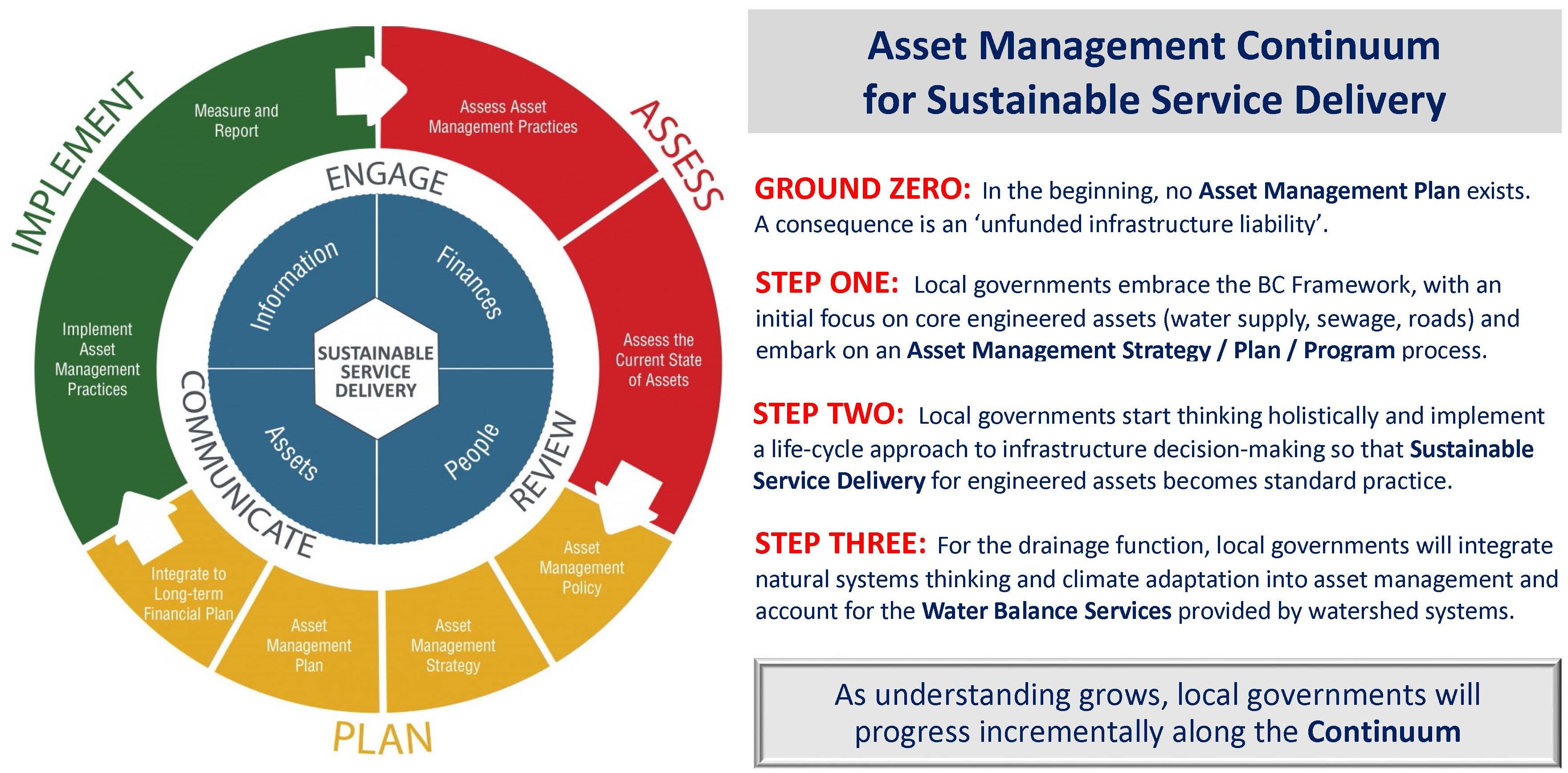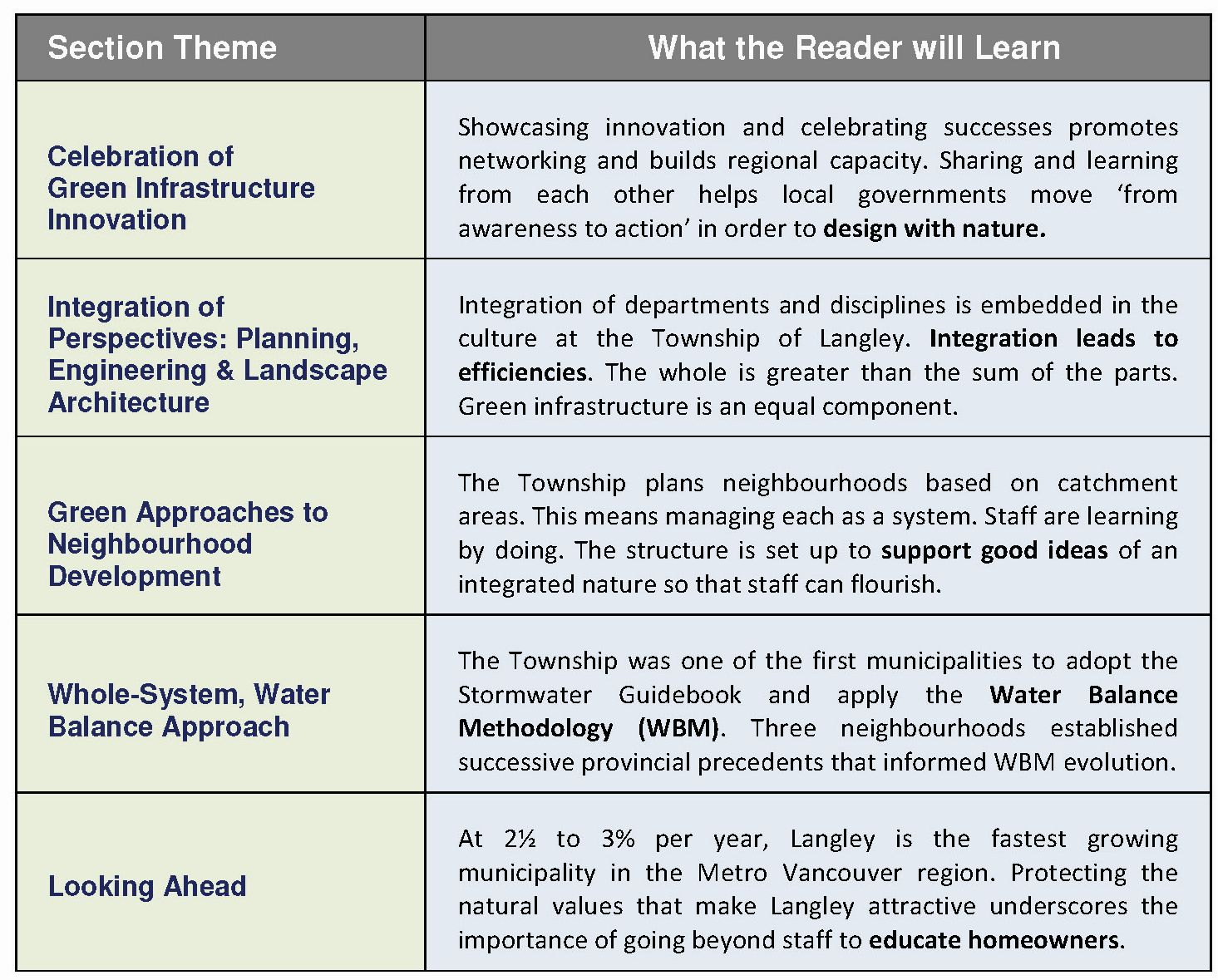CREATING THE FUTURE IN THE TOWNSHIP OF LANGLEY: “Whole –system thinking is part of our culture,” stated Kevin Larsen, Manager of Water Resources & Environment
Note to Reader:
The Langley Township story is the fifth in a series of Watershed Blueprint Case Profiles published by the Partnership for Water Sustainability.
The series showcases and celebrates successes and long-term ‘good work’ in the local government setting.
The purpose of the series is to inform and facilitate inter-regional collaboration in the Georgia Basin.
By telling the stories of those who are spearheading changes in practice, this helps other local governments eliminate the “disconnect between information and implementation” that may otherwise hold them back.
Sustainable Watershed Systems,
through Asset Management
“Whole –system thinking is part of our culture,” stated Kevin Larsen. As Manager, Water Resources and Environment, his engineering responsibilities encompass all aspects of the water cycle vis-à-vis planning and constructing municipa l infrastructure. His scope of work includes waterworks, sewerage and drainage. During the interview, he provided examples of whole-system thinking.
l infrastructure. His scope of work includes waterworks, sewerage and drainage. During the interview, he provided examples of whole-system thinking.
“An example of whole-system thinking is our approach to detention ponds. We are not just detaining water. This is but one component. There are multiple aspects including environment, operational considerations.”
“Water Resources and Environment staff interact with the Green Infrastructure group on development applications. A major focus, however, is to ensure water supply for our growing population. The more that we can reduce water use during the summer when use increases by 50%, the more we can defer engineered infrastructure to be more sustainable and save considerable dollars.
“As for a changing climate, and considering the ‘new normal’ of alternating floods and droughts, the Water Resources and Environment department is in the front lines.”
Asset management has traditionally been about hard engineered assets such as waterlines, sanitary and storm sewers. Kevin Larsen recognizes that watershed systems are also “infrastructure assets”.
Sustainable Service Delivery
Released by the Province and Union of BC Municipalities in 2015, Asset Management for Sustainable Service Delivery: A BC Framework establishes expectations for local government financial sustainability. Moreover, it sets a strategic direction that would refocus business processes on outcomes that reduce life-cycle costs and risks.
“The Township is implementing a life-cycle approach to valuing and managing our hard engineered assets,” stated Kevin Larsen.
A future next step would be to extend the life-cycle approach to include valuation of the services provided by watershed systems. Given its record of water balance and green infrastructure innovation, Langley is poised to make the transition to Step Three (integration of natural assets thinking and climate adaptation) on the Asset Management continuum.
Desired Outcome
The community benefits of a Whole-System, Water Balance Approach include: AVOID an unfunded liability (by limiting stream erosion, preventing flooding, improving water quality), ADAPT to a changing climate, and REDUCE life-cycle costs for drainage infrastructure.
To Learn More:
To read the complete story, download a copy of the Watershed Case Profile. Click on Green Infrastructure Innovation in Langley Township, released in October 2017.
The Table of Contents below is a synopsis. It distills the essence of each section into a succinct statement. These create a storyline. Readers are asked to pause and reflect on them before reading the story itself.





